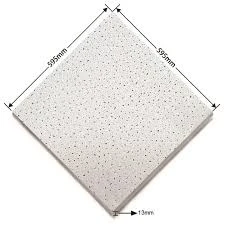- Afrikaans
- Albanian
- Amharic
- Arabic
- Armenian
- Azerbaijani
- Basque
- Belarusian
- Bengali
- Bosnian
- Bulgarian
- Catalan
- Cebuano
- Corsican
- Croatian
- Czech
- Danish
- Dutch
- English
- Esperanto
- Estonian
- French
- German
- Greek
- Hindi
- Indonesian
- irish
- Italian
- Japanese
- Korean
- Lao
- Malay
- Myanmar
- Norwegian
- Norwegian
- Polish
- Portuguese
- Romanian
- Russian
- Serbian
- Spanish
- Swedish
- Thai
- Turkish
- Ukrainian
- Uzbek
- Vietnamese
Lis . 06, 2024 16:03 Back to list
Installing Access Panels in Plasterboard Ceilings for Easy Maintenance and Inspections
Understanding Plasterboard Ceiling Access Panels
Plasterboard ceiling access panels are an often-overlooked component in both residential and commercial construction. These panels play a crucial role in maintaining functionality while ensuring aesthetics are not compromised. In this article, we will explore what plasterboard ceiling access panels are, their benefits, installation procedures, and considerations for selection.
What are Plasterboard Ceiling Access Panels?
Plasterboard ceiling access panels are removable sections of a plasterboard or drywall ceiling designed to provide convenient access to concealed services such as electrical systems, plumbing, and HVAC units. They are typically framed in the ceiling structure and can be secured with screws, clips, or simply pressed into place, depending on the design. When not in use, these access panels blend seamlessly with the surrounding surface, making them nearly invisible.
Benefits of Plasterboard Ceiling Access Panels
1. Ease of Access The primary advantage of an access panel is that it allows for quick and easy access to essential services. This is particularly beneficial in commercial environments where maintenance is frequent.
2. Aesthetic Appeal Unlike traditional access points that can be unsightly, plasterboard access panels are designed to match the surrounding ceiling. This ensures that the visual integrity of a room is maintained.
3. Cost-Effective Installing access panels can be a cost-effective solution for maintenance, potentially reducing the need for more extensive renovations or repairs.
4. Enhanced Safety With designated access points, the risk of damaging the ceiling or other structures during maintenance work is significantly reduced.
5. Durability Many plasterboard ceiling access panels are made from robust materials, designed to withstand wear and tear over time, making them a long-lasting addition to your property.
Installation of Plasterboard Ceiling Access Panels
Installing plasterboard ceiling access panels involves several steps. Here’s a simplified guide
1. Planning Identify the services that require access. Plan the location of the access panel, ensuring it does not interfere with existing structures or disrupt the flow of the room.
plasterboard ceiling access panel

2. Cutting the Opening Using a drywall saw, cut a square or rectangular opening in the plasterboard ceiling. Make sure the dimensions align precisely with the access panel size.
3. Framing Install a framed surround within the opening to provide support for the access panel. This often involves attaching wooden or metal support struts to the existing ceiling structure.
4. Mounting the Panel Fit the access panel into the opening and secure it according to the manufacturer’s instructions. This might involve using screws, clips, or a friction fit.
5. Finishing Touches Finally, touch up the surrounding area with paint or finishing materials to ensure a seamless look.
Considerations for Selecting Access Panels
When choosing a plasterboard ceiling access panel, consider the following factors
1. Size and Shape Ensure the panel size matches your intended opening accurately. Panels are available in various shapes and dimensions.
2. Material Depending on the environment, different material options may offer varying levels of durability and aesthetics.
3. Type of Access Determine whether you need a hinged, sliding, or removable panel. Each type offers different access capabilities suited for specific locations.
4. Load-Bearing Capacity If the panel will be installed in a high-traffic area, select a panel capable of withstanding potential impacts or weight.
5. Accessibility Features Some access panels come with added features like locking mechanisms or fire-rated construction. Assess your specific needs before making a choice.
Conclusion
Plasterboard ceiling access panels are an essential aspect of modern building design, providing a perfect blend of functionality and aesthetics. Their ease of installation, cost-effectiveness, and capacity to maintain a clean look while granting access to crucial services make them an indispensable choice for homeowners and builders alike. By carefully considering where to install these panels and selecting the right type, you can ensure efficient maintenance access while preserving the beauty of your space.
-
Transform Interiors with PVC Gypsum Ceiling: A Stylish, Durable, and Moisture-Resistant SolutionNewsMay.19,2025
-
The Smart Interior Upgrade: Discover the Durability and Versatility of Gypsum Ceiling Access Panel SolutionsNewsMay.19,2025
-
The Smart Choice for Interior Design: Discover the Value of PVC Gypsum Ceiling SolutionsNewsMay.19,2025
-
Mineral Fiber Ceiling Tiles: The Smart Blend of Performance and AestheticsNewsMay.19,2025
-
Mineral Fiber Ceiling Tiles: The Superior Choice Over Gypsum for Sound and Fire SafetyNewsMay.19,2025
-
Mineral Fiber Ceiling Tiles: Eco-Friendly Strength and Style for Every CeilingNewsMay.19,2025







